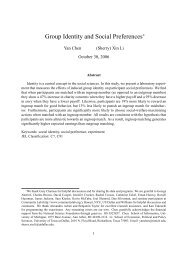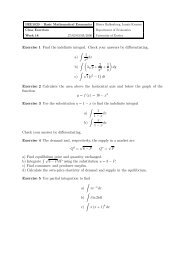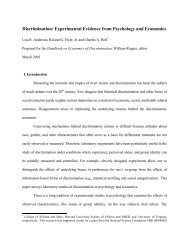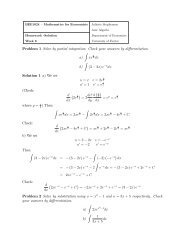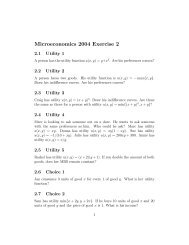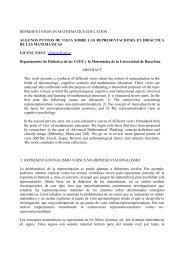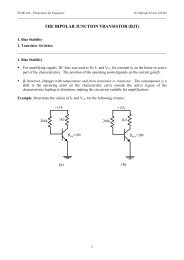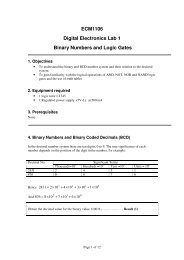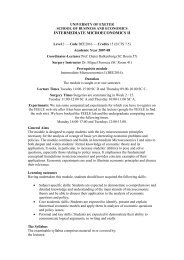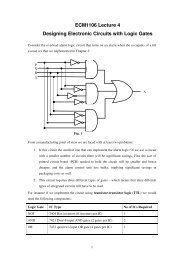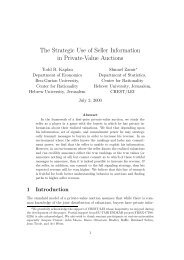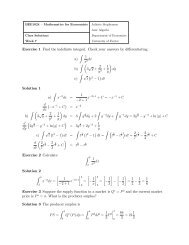FEEDBACK CONTROL SYSTEMS
FEEDBACK CONTROL SYSTEMS
FEEDBACK CONTROL SYSTEMS
Create successful ePaper yourself
Turn your PDF publications into a flip-book with our unique Google optimized e-Paper software.
ECM2105 - Control Engineering Dr Mustafa M Aziz (2013)________________________________________________________________________________5. Steady-State Errors in Unity Feedback Control SystemsWhen a command input (desired output) is applied to a control system it is generally hoped thatafter any transient effects have died away the system output will settle down to the command value.The error with any system is the difference between the required (desired) output signal, i.e. thereference input signal which specifies what is required, and the actual output signal. For the unityfeedbackcontrol system shown in the figure, the error is:R(s)E(s) = R(s) − Y(s) =1+G(s)R(s)+ _E(s)G(s)Y(s)Using the final-value theorem (assuming the system is stable), the steady-state error is:esssR(s)= e( ∞)= lime(t) = limsE(s) = limt→∞s→0s→01+G(s)A general representation of G(s) is:G(s)K(s+ bsmm−1m−1=N nn−1s (s + an−1s+ L+b s + b1+ L + a s + awhere K is a constant and m and n are integers and neither a 0 nor b 0 is zero. N is an integer, thevalue of which is called the type of the system. Thus if N = 0 then the system is said to be type 0, ifN = 1 then type 1, if N = 2 then type 2 and so on. The type number is thus the number of 1/s factorsin the open-loop transfer function G(s). Since 1/s represents integration, the type number is thenumber of integrators in the open-loop transfer function.Exercise: What are the type numbers for the systems shown in the following figures?100))R(s)+−K(s + 1)(s −1)(s+ 6)Y(s)R(s)+−K(s + 1)s(s −1)(s+ 6)Y(s)15



